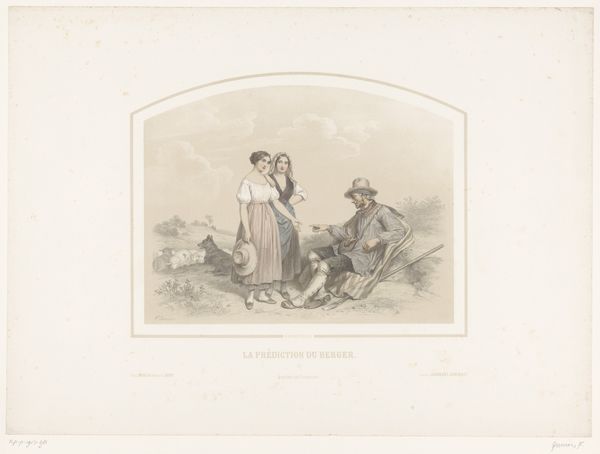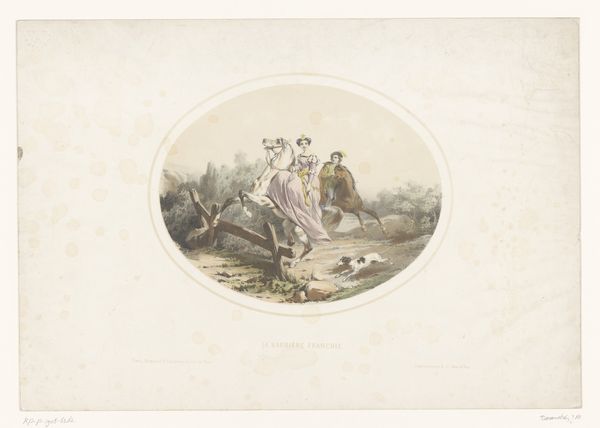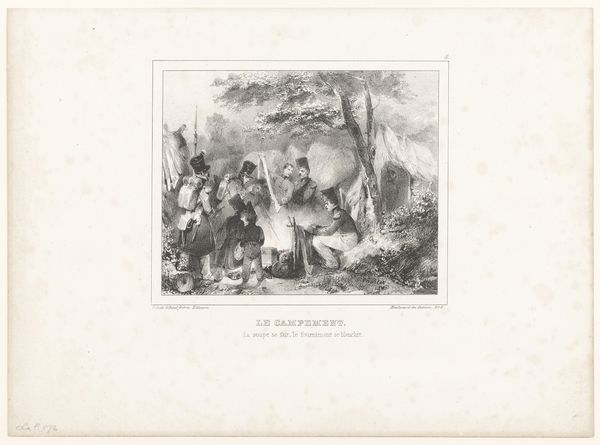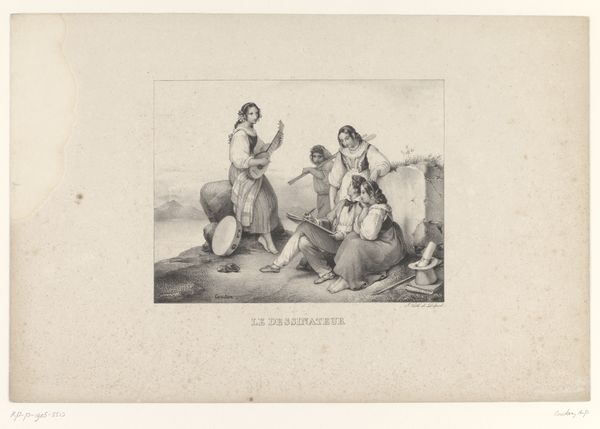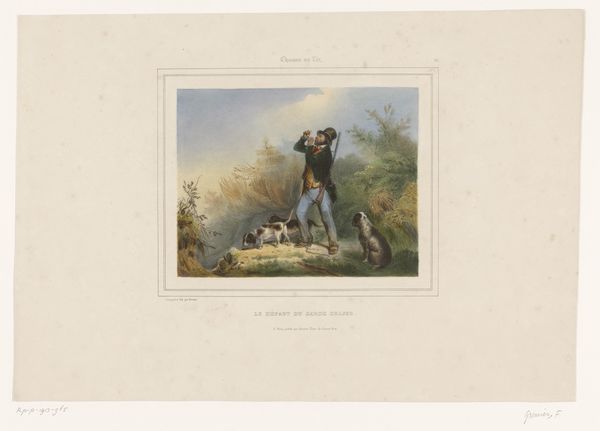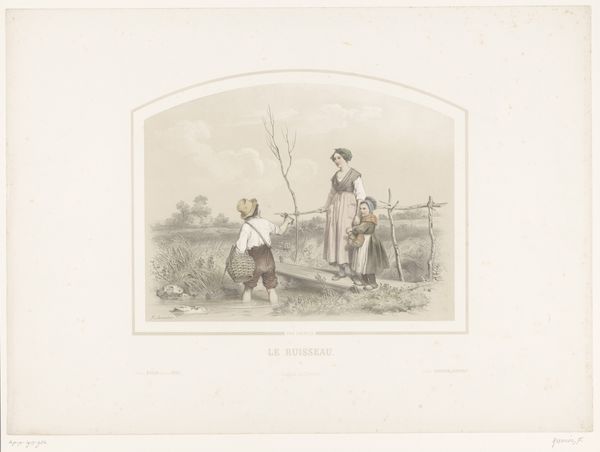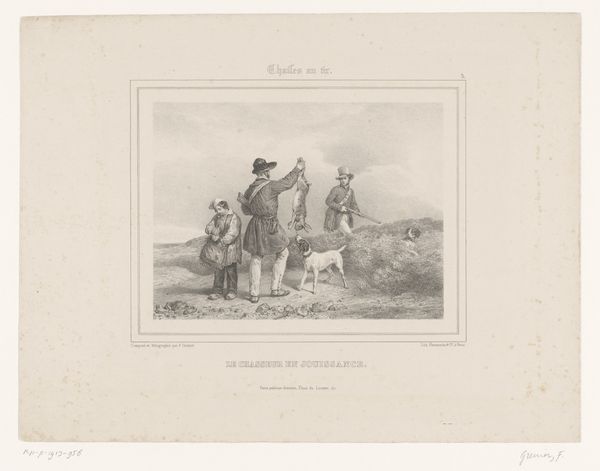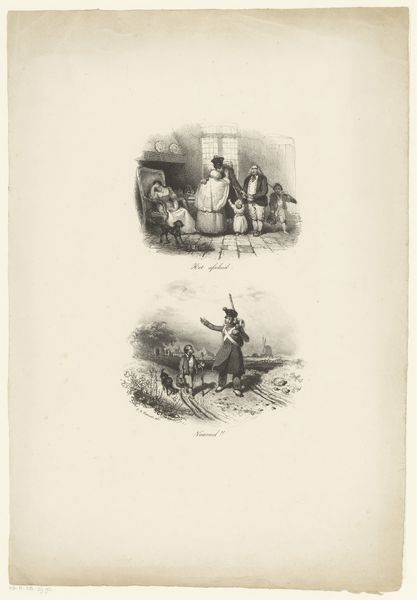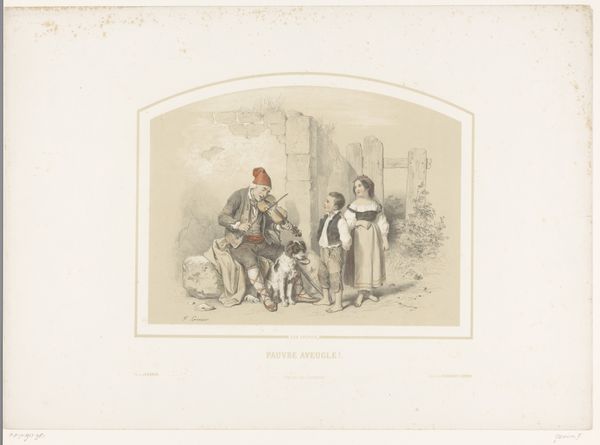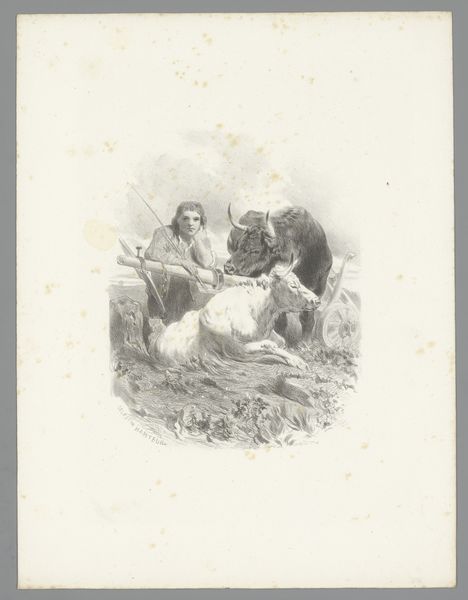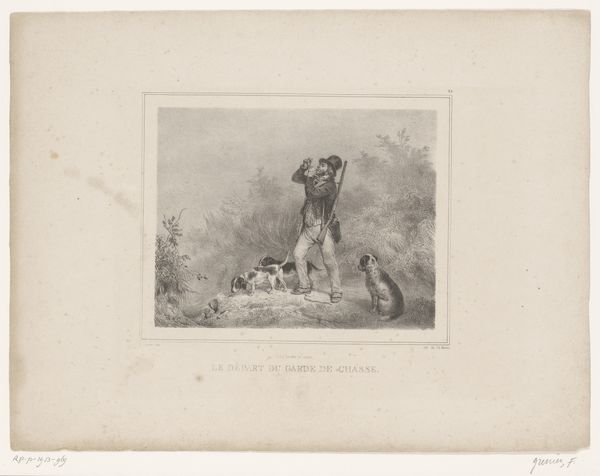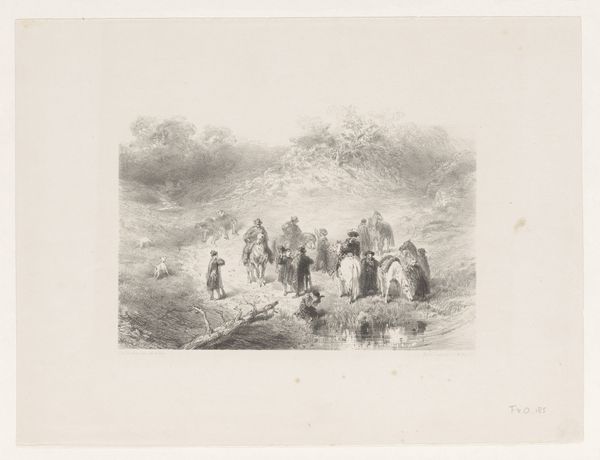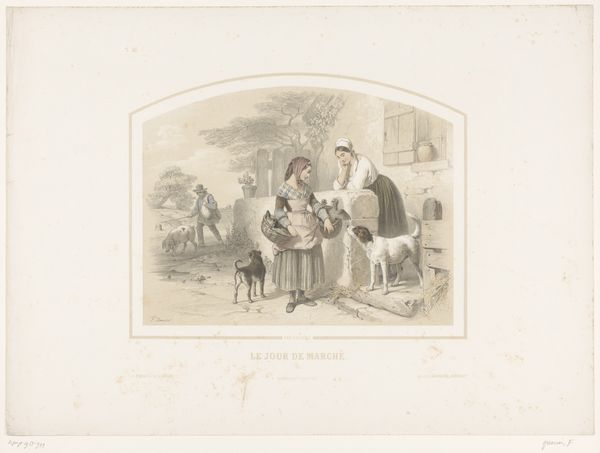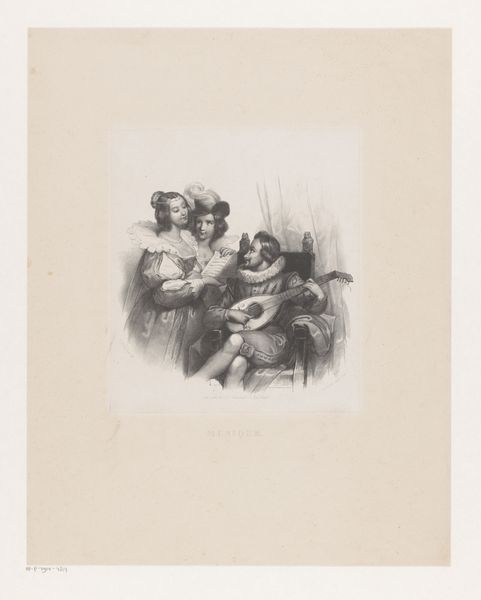
watercolor
#
landscape
#
figuration
#
watercolor
#
romanticism
#
watercolour illustration
#
genre-painting
#
watercolor
Dimensions: height 402 mm, width 550 mm
Copyright: Rijks Museum: Open Domain
Editor: We're looking at "Family with Dog in a Rain Shower," a watercolor by François Grenier, created sometime between 1819 and 1845. The figures huddle together against the storm, and I’m struck by the contrast between their vulnerability and the vastness of the landscape. What do you see in this piece? Curator: This watercolor presents a romanticized view of rural poverty, doesn’t it? But let’s not overlook the social commentary embedded within this seemingly sentimental scene. How might the artist's choice of watercolor, a typically 'feminine' medium, intersect with the portrayal of this family, particularly the mother figure? Editor: I hadn’t thought about the medium itself carrying that kind of gendered association. So, by using watercolor, is Grenier perhaps making a statement about the emotional labor often associated with motherhood and poverty? Curator: Precisely! The "feminine" delicacy of the medium contrasts with the harsh realities faced by this family. Think about the historical context: rapid industrialization, urbanization, and their impacts on rural communities. What narrative does the image tell about their displacement? Editor: I see it. They seem displaced, caught between a romantic ideal of rural life and the struggle for survival. The dog almost feels like an equal member of this struggling group. Curator: The dog is a good read. Domestic animals are used, even today, to tug at the emotional chords of the heart and make us sympathise with causes greater than ourselves. Think also about class. Were they wealthy or working-class, and how does that influence your perspective of the work? Editor: Looking closely, their worn clothes and the bare feet of some children indicate poverty, but it’s subtly presented, almost softened. This gives a strong sense of social injustice, doesn't it? The emotional narrative challenges us to consider those who were marginalized and made vulnerable during this period of dramatic upheaval. I am starting to think that the piece is much more of a commentary than it at first appeared. Curator: Exactly! The role of art is to do more than just reflect life - it can also force people to re-examine some of their cultural assumptions. Editor: This makes me see the piece in an entirely new light. Thank you!
Comments
No comments
Be the first to comment and join the conversation on the ultimate creative platform.
